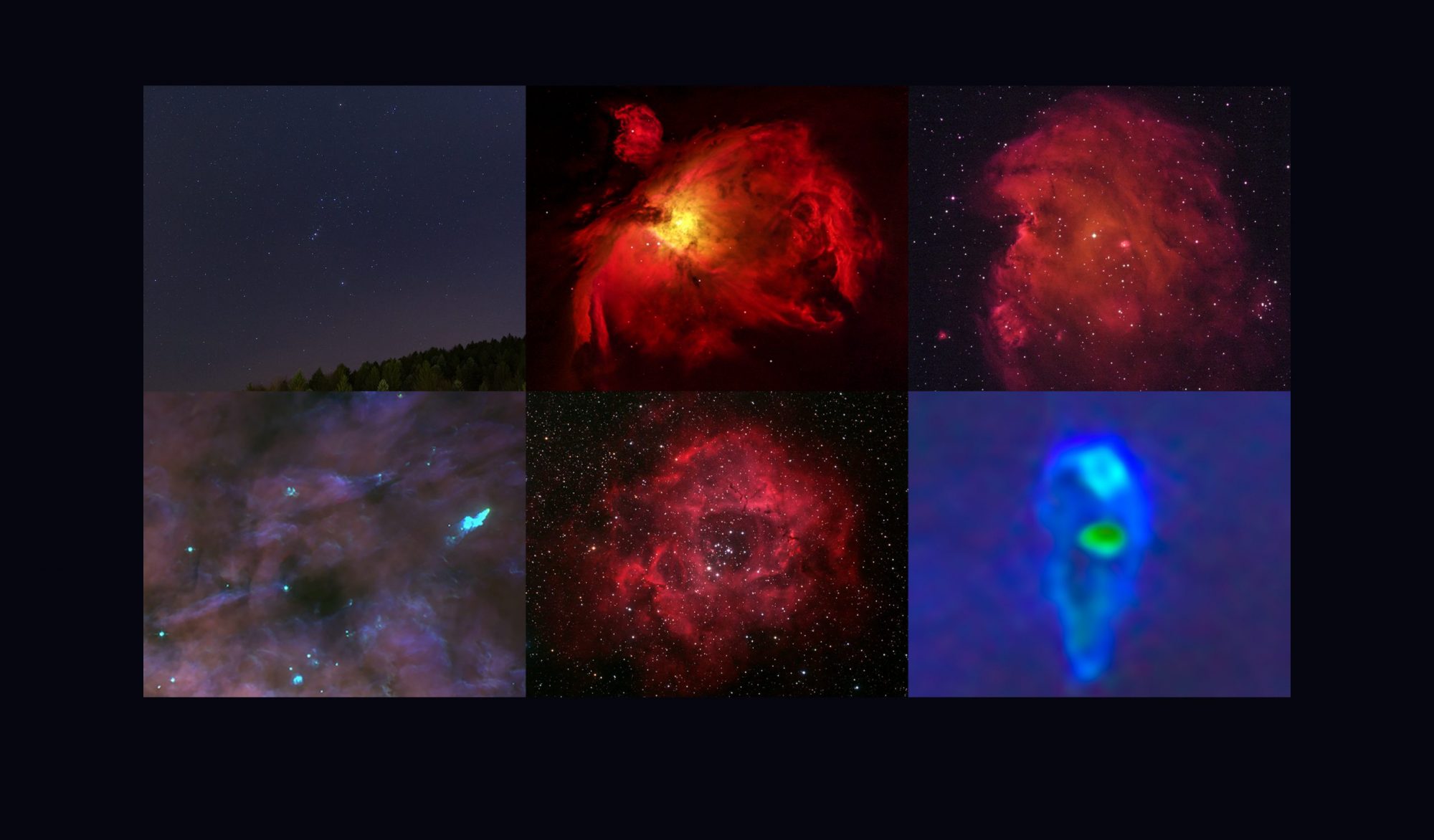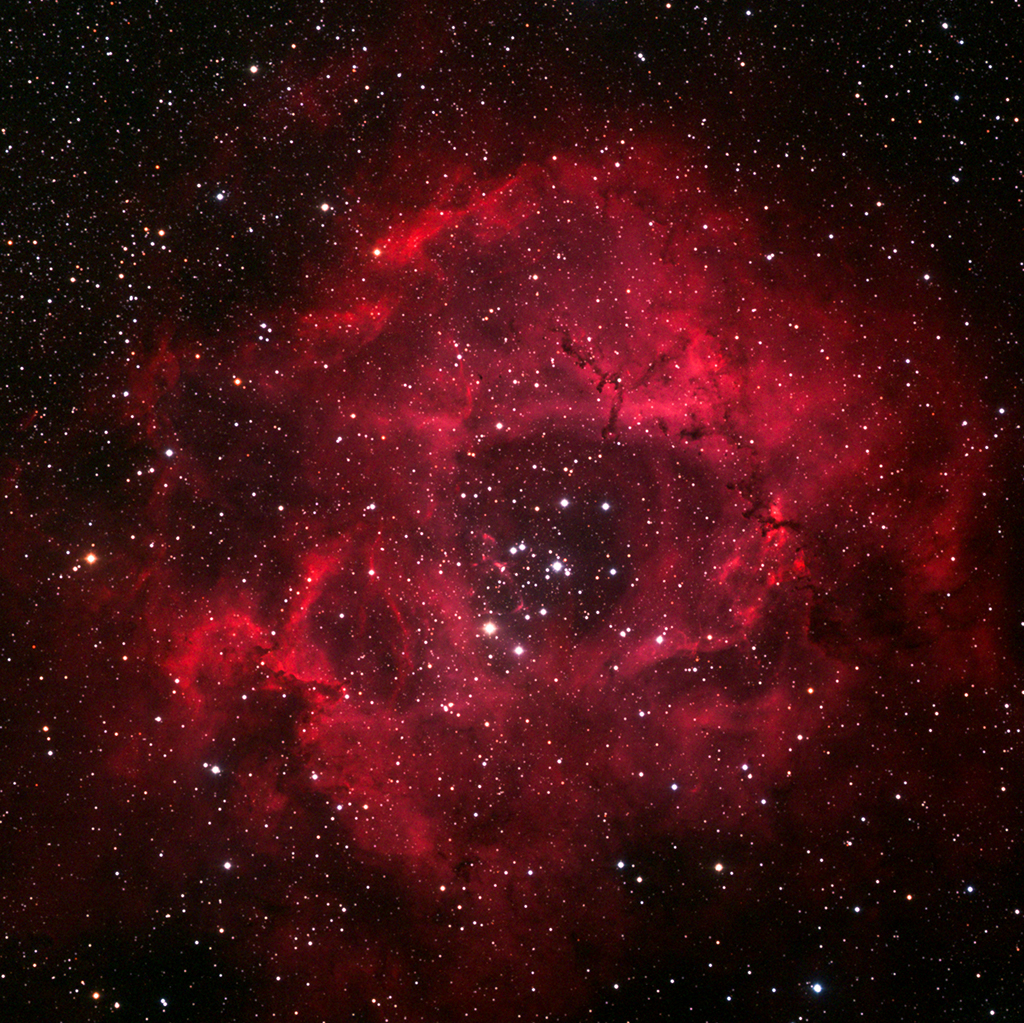
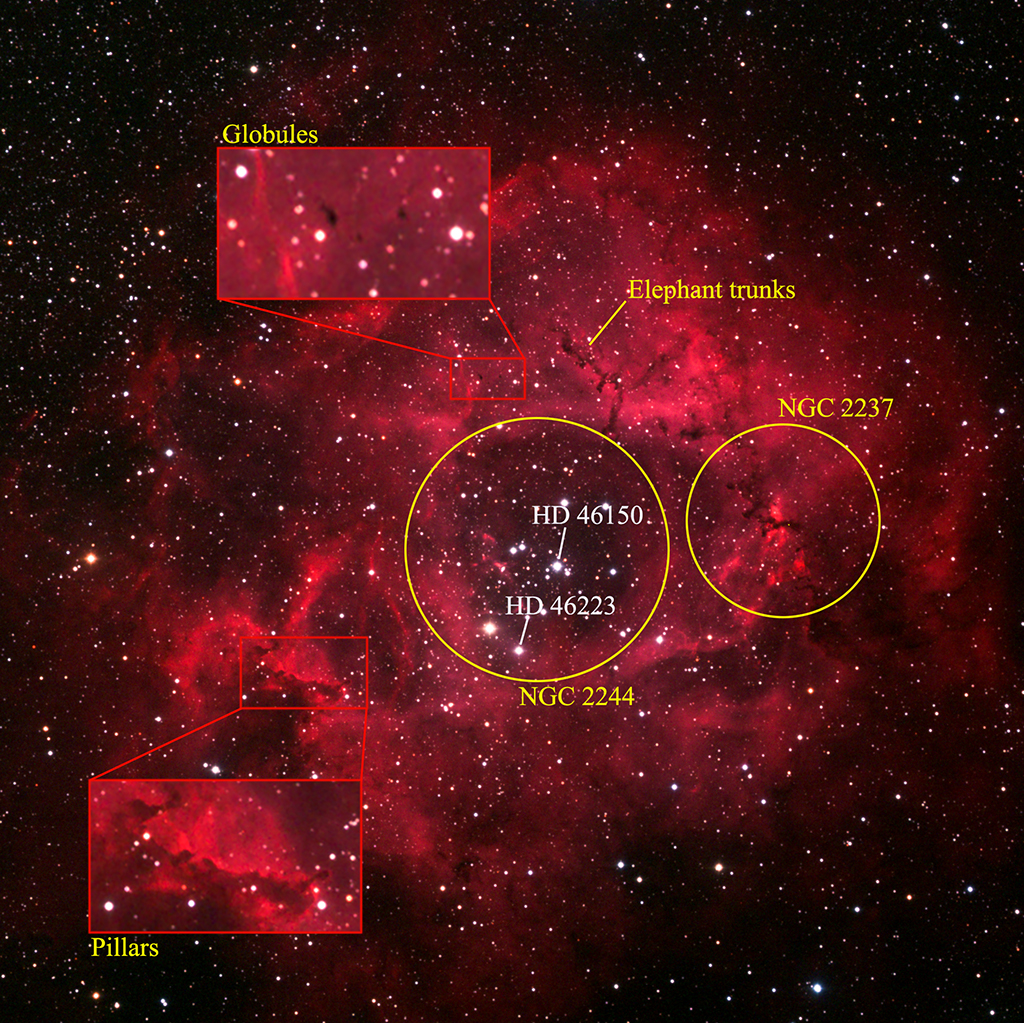
The Rosette Nebula in Monoceros (Tele Vue NP127fli, FLI Proline 16803). RGB picture of 113 stacked 120 second exposures in Red, Green, Blue and Halpha filters.
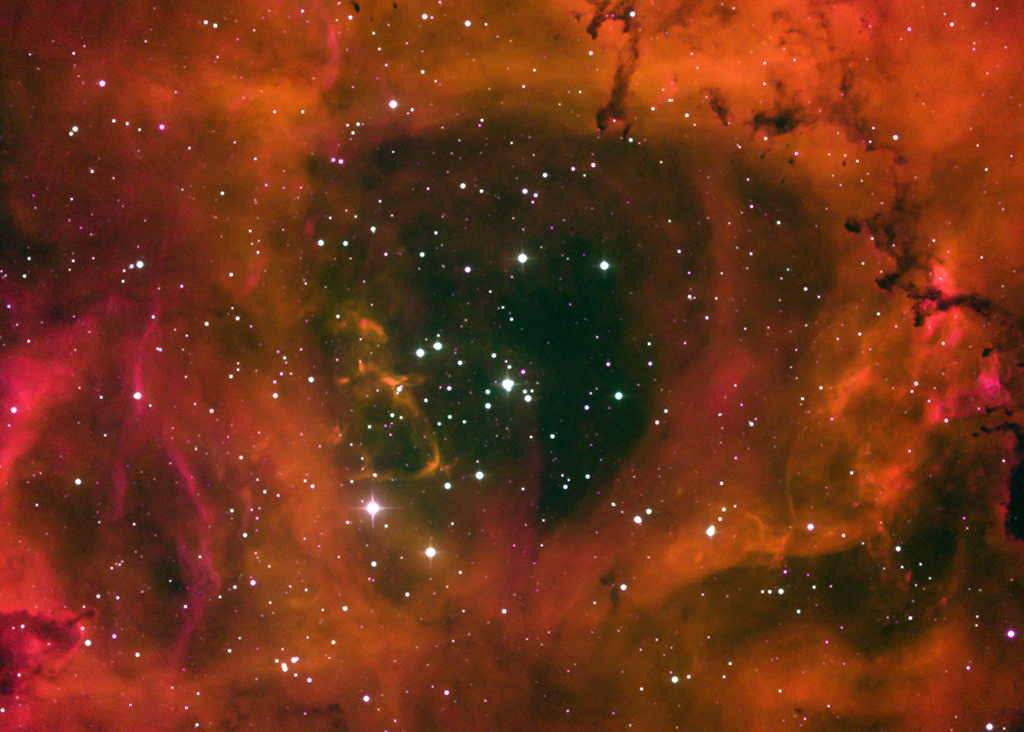
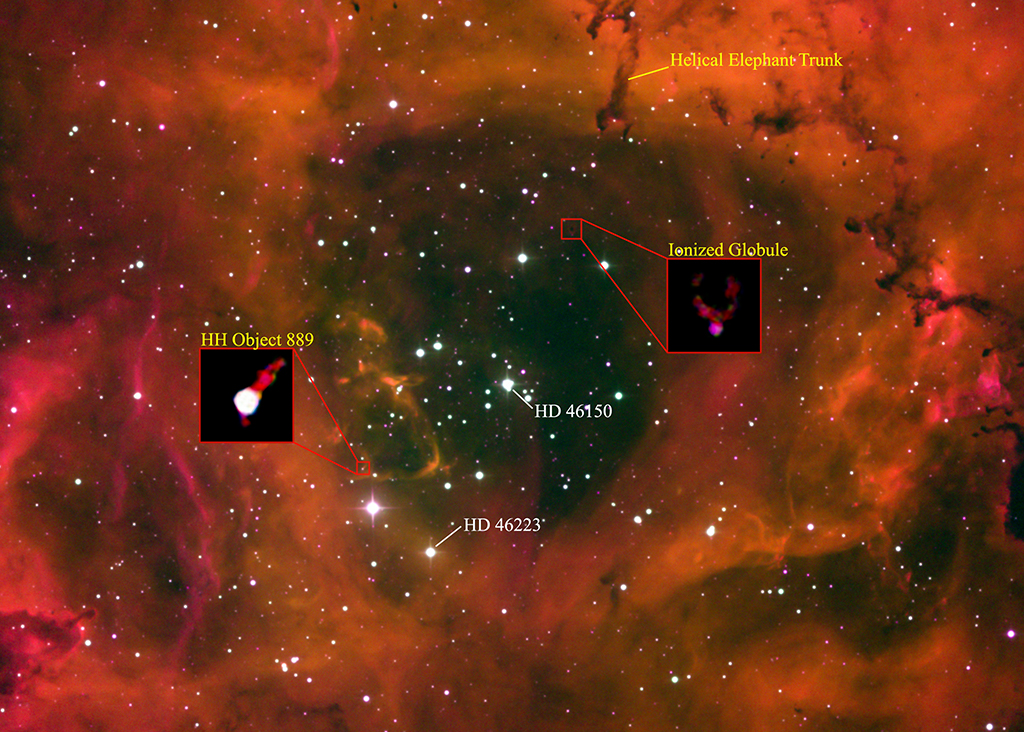
The center of the Rosette Nebula in Narrow-band observations (Planewave 17in CDK, FLI-PL6303E). RGB picture of 67 stacked 300 second exposures in Halpha, OIII and SII Narrow-band filters.
The Rosette Nebula (SH2-275 in the Sharpless catalog) is an extended, relatively bright emission nebula in the constellation of Monoceros. Monoceros is a neighbor of Orion and the Rosette Nebula is located at the border of the two constellations. It has an approximately four times larger distance from earth compared to the Orion Nebula. The center of the nebula is formed by a cluster (NGC 2244) of young, massive O-type and B-type like stars. These stars, especially the two O-type stars HD 46223 and HD 46150, did form a cavity inside the nebula which gives it the characteristic, rose like structure. Outside the cavity the nebula is still a site of active star formation. Recent studies show that the nebula possibly has a disk like geometry which is seen face-on from earth.
The above RGB picture of the Rosette Nebula was made with Red, Green, Blue and Halpha filters using a remote telescope (T09) from the iTelescope network in Siding Spring/Australia. I did add the Halpha picture to the picture made with the Red filter which results in a new Red channel.
Inside the emission nebula several small, dark nebulae can be identified. These compact objects are called Bok Globules (named after the astronomer Bart Bok). The globules are possibly sites of ongoing star formation. The more extended dark structures in the nebula are called elephant trunks. Pillars are higher density regions inside the nebula which are eroded by the intense radiation coming from the nearby O-type stars. NGC 2237 is another cluster of young stars inside the Rosette Nebula. It is still an open question if the star formation in NGC 2237 was triggered by the O-type stars in NGC 2244 or if the stars in the cluster did form independently.
The picture of the center of the Rosette Nebula was made with three Narrow-band filters for the Halpha (Red), OIII (green) and SII (blue) emission lines using a remote telescope (T21) from the iTelescope network in New Mexico/USA.
The Herbig-Haro object (named after the two astronomers George Herbig and Guillermo Haro) HH 889 is a young F-type star inside the Rosette nebula. This star has an extended jet of hot gas. The atoms inside the jet are ionized by the nearby O-type stars and the recombining hydrogen ions produce strong Halpha emission. This gives the jet the intense red color. Inside the central cavity of the nebula a globule which surface is ionized can be identified. The elephant trunk in the northern part of the picture has a cylindrical form built up by thin filaments. These filaments form a twisted, helical pattern. The most likely source for this double helix geometry is a magnetic field inside the nebula.
